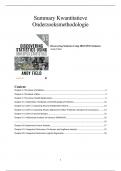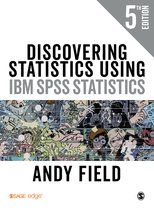Summary
Summary Discovering Statistics Using IBM SPSS - Quantitative Research Methodology (MAN-BPRA247)
- Course
- Institution
- Book
This summary contains everything you need to know for the course 'Kwantitatieve Onderzoeksmethodologie' (in Dutch) at Radboud. Note: If you want more chapters of Field's book, I have a bundle containing two summaries, each with different chapters summarised.
[Show more]




